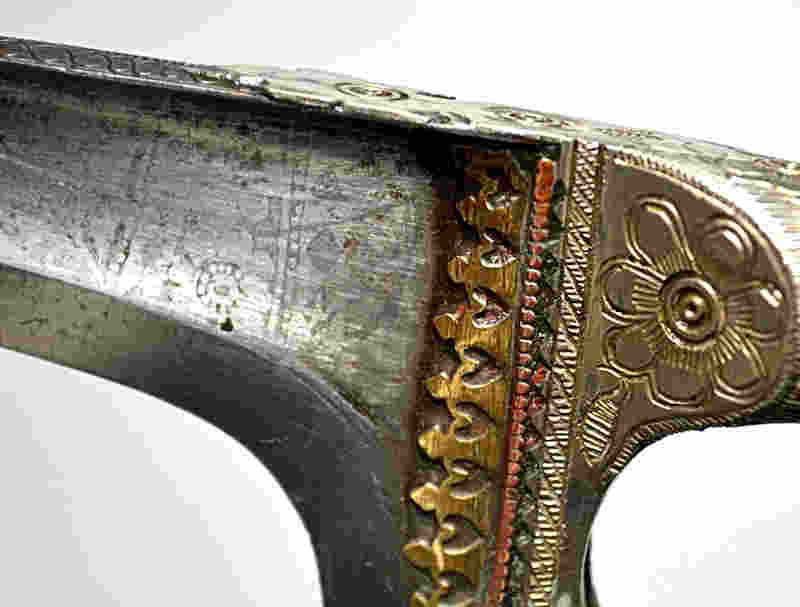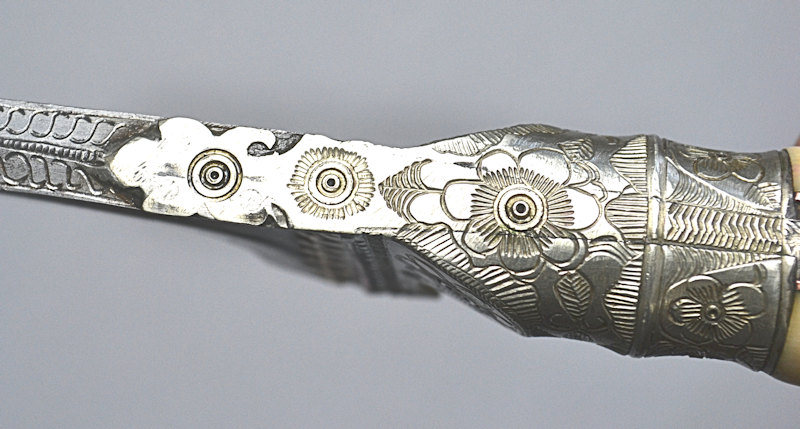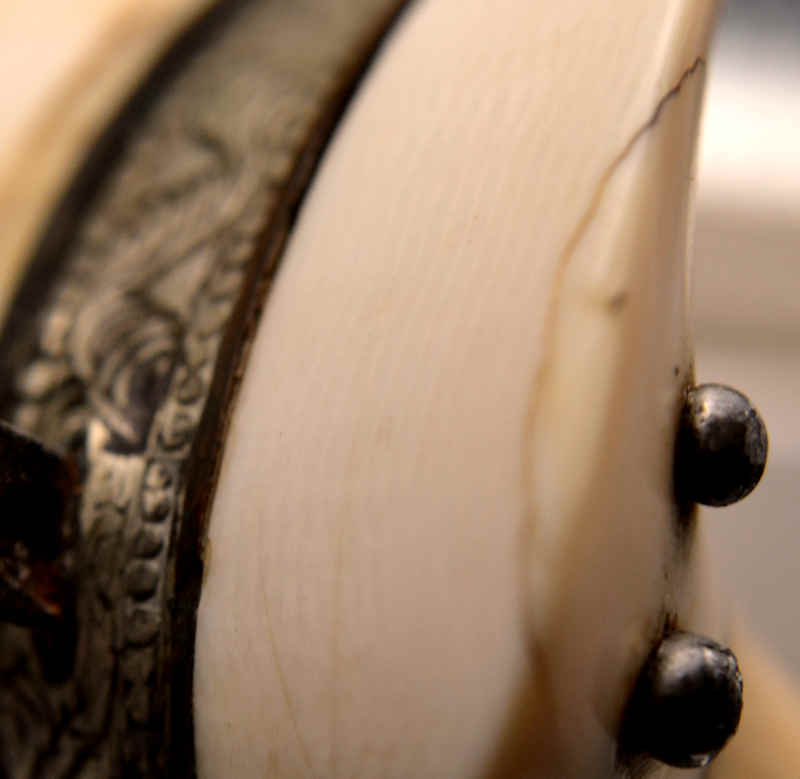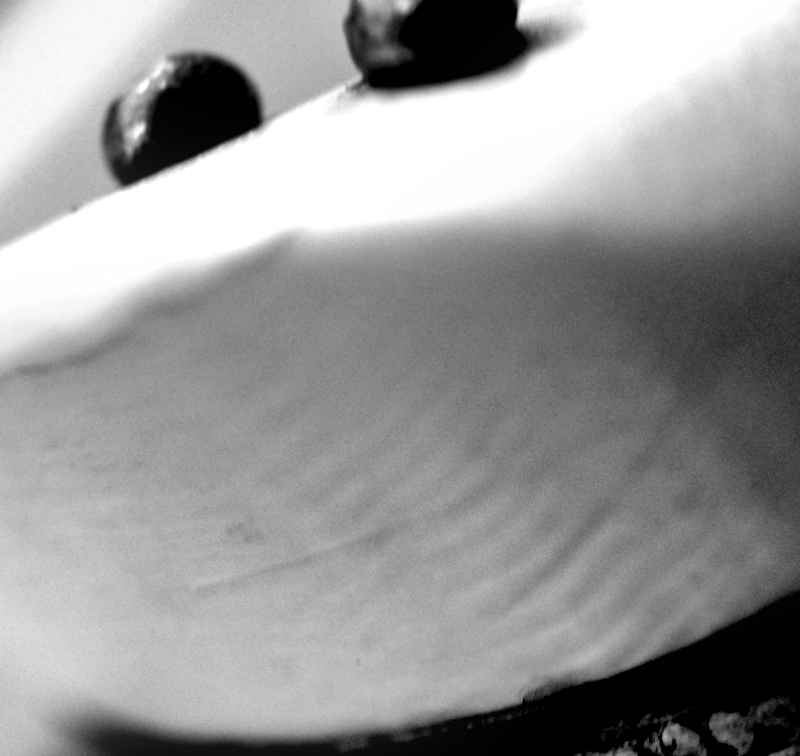A recent purchse at auction. Catalogue description was as follows:
19th Century Indo Persian Kard single edged T shaped blade. Feint floral etching, white metal floral engraved ferrule, blade spine and grip edges. Polished bone bird beak slab grips retained by four dome head rivets. Contained in its red tooled leather covered wooden scabbard.
My stats:
Weight: 7oz (0.21kg)
Length overall: 13'' (33cm) Blade: 9'' (23cm)
POB: At blade/hilt lunction.
Profile taper: 1.76'' (44.7mm) at ricasso, narrows immediately to 1.09'' (27.9mm), 0.74'' (19.0mm) at mid blade and straight taper to a sharp tip.
Distal taper 0.43'' (11mm) at ricasso, 0.35'' (8.9mm)at mid blade,. 0.19'' (4.9mm) 1 inch from tip. Measured across the 'T' section blade back
These is feint etching to blade and crisp detailing to the white metal (white brass) mounts.Grip scales appear to be ivory. Detail is hard to capture but I have included an enhaced black and white image of the rear of the grip.
The tooling on the scabbard includes brass surrounds to cutouts revealing coloured metalic foil beneath.
All comments on opinions gratefully received.





